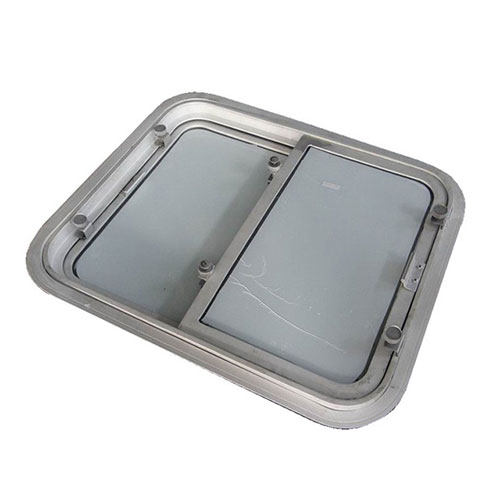Custom Shape Design in Marine Windows
Marine windows are crucial for vessels, providing visibility, structural integrity and protection from the harsh marine environment. Traditionally, marine windows were manufactured in standard shapes, usually circular type windows or rectangular type windows, to make it easier to produce and install. But as the requirements of modern ship design advance and the need for custom-shaped marine windows has become popular for both aesthetic and functional reasons. This article focuses on the significance, benefits, challenges and design considerations of custom shape designs in marine windows.
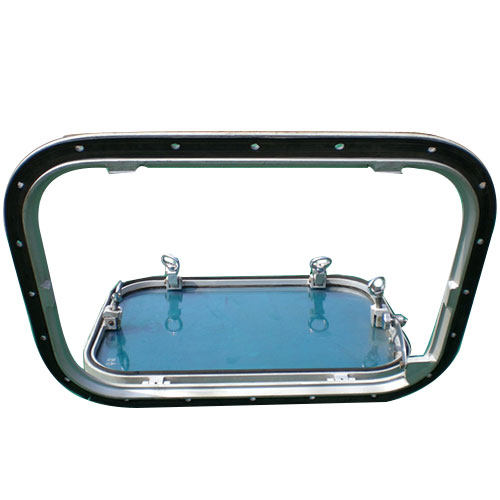
Table of Contents
Why Choose Custom-Shaped Marine Windows
Enhanced Visibility and Safety
One of the main reasons to choose custom-designed windows for marine applications is the capability to customize the visibility to the particular requirements for the particular vessel. Regular window shapes could result in blind spots or restrict the viewlines in crucial areas like the bridge area or the control rooms. Custom windows can be created to conform to the contours of the vessel or to be angled to ensure that crew members enjoy the best views. Increased visibility directly aids in more secure navigation and improved control of operations that is crucial in the harsh marine environment.
Seamless Integration Vessel Design
Modern vessels typically have complex superstructures and hull shapes which standard windows can’t fit into. Custom-shaped marine windows ensure an ideal fit in these particular spaces while maintaining the quality of the shape and design. It is a seamless and integrated system that not just preserves the solidity of the hull, it can also stop issues such as drafts or leaks that could result from poorly fitting windows. By matching the shape of the window to the shape of the vessel designers can build more efficient and sleeker vessels.
Distinctive Aesthetic Appeal
In luxurious vessels and yachts the appearance is an important element. Custom-shaped marine windows give you the possibility to design visually stunning designs that can set a vessel apart. The unique window forms, such as broad lines or sharp angles can enhance a vessel’s appearance and style. These design elements could also serve as branding tools to make a yacht or vessel instantly identifiable and increasing its market value.
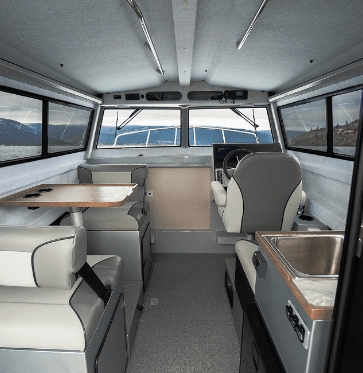
Improved Performance and Comfort
Beyond aesthetics, custom design windows can boost the performance of your vessel. By optimizing the form and location of windows, naval architects can decrease drag and enhance aerodynamics or hydrodynamics. This could lead to greater fuel efficiency. In addition, the specialized glazing and intelligent glass technology integrated into custom windows are able to manage light transmission and heat and improve comfort onboard for crew and passengers.
Compliance with Safety Standards
While custom-designed shapes pose manufacturing difficulties but they are developed in strict conformity to safety guidelines for marine use. Utilizing the most the most advanced techniques of engineering and materials, custom-designed windows for marine use are able to meet or exceed the standards established by authorities like the International Maritime Organization (IMO) or classification societies such as ABS or Lloyd’s Register. This guarantees that the choice of windows that are custom-designed does not affect the safety or longevity of.
Flexibility in Material and Technology
A custom design can also provide more freedom in selecting the materials and also integrating technology. If you’re using laminated glass, tempering glass, or acrylic manufacturers can customize the design of windows to meet the conditions of the environment and vessel. Furthermore, innovative technologies like electrochromic glass and embedded sensors can be integrated in custom-designed windows increasing capabilities beyond the traditional glass.
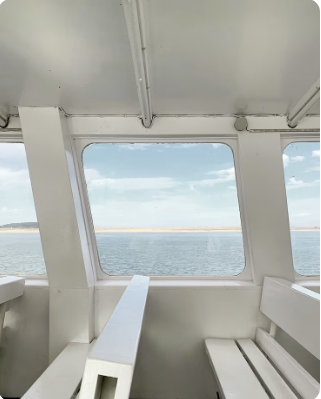
Popular Custom Shapes in Marine Windows
| Custom Shape | Typical Applications | Advantages |
| Oval / Elliptical | Porthole windows for yachts, luxurious vessels | Aesthetics that are smooth, and better distribution of stress |
| Tapered / Trapezoidal | Bridge windows, control cabins | Better visibility angles, better fit surface slopes |
| Polygonal (e.g., Hexagonal, Octagonal) | Special vessels, ships for passengers | Unique appearance, enhanced structural rigidity |
| Curved / Bowed | Observation decks, superstructures | The sleek design minimizes reflections and glare |
| Asymmetrical / Irregular | Custom yachts, research vessels | It is able to accommodate complex hull contours and optimizes space utilization |
| Circular | Rooms for engines, windows for ventilation | Classic shape, sturdy under pressure |
| Multi-pane or Clustered Shapes | Great panoramic views of cruise vessels | Increases viewing space while ensuring structural support |
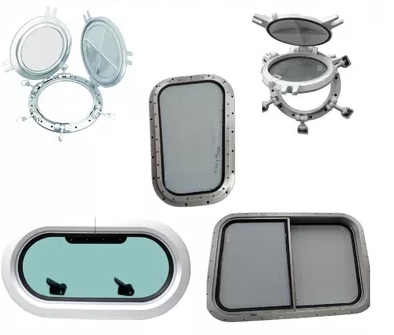
Key Considerations for Custom Shape Design in Marine Windows
Designing marine windows in custom shapes provides a great deal of flexibility and innovation for modern vessels. However, this process involves several critical factors that must be addressed carefully to ensure that windows meet the safety, functionality and aesthetic requirements for marine applications.
1. Material Selection and Durability
The selection of the material is crucial when creating custom marine windows. The most common options are laminated glass, tempered glass and acrylic, each having distinct properties in terms of the strength, impact resistance and clarity. Certain shapes require further processing, such as precision cutting lamination, bending, or bending and the glass must be able to withstand the harsh conditions of marine like saltwater corrosion, ultraviolet exposure, and variations in temperature. The right choice of material will ensure the longevity of the window and security for the duration of the vessel’s operation.
2. Structural Integrity and Safety Compliance
Custom-shaped marine windows can create challenges in ensuring the strength of the structure. The window has to withstand external pressures caused by winds, waves and mechanical impact without damaging the integrity of the vessel’s hull. A thorough analysis of engineering, which includes the testing of stresses and simulation is essential to ensure that the window’s design is in line with the marine safety standards established by classification societies such as ABS, DNV GL, or Lloyd’s Register. Making sure that the load distribution is correct as well as reinforced frame construction is crucial for the longevity of custom-shaped windows.
3. Precise Fabrication and Manufacturing Techniques
The creation of non-standard window shapes demands modern manufacturing techniques. CNC machines and CAD applications are crucial to ensure precision cutting, shaping and cutting. For certain materials, such as laminated glass or acrylic layers, bending or bending techniques could be required to get the desired shape without harming the strength. Collaboration between manufacturers and designers is essential to translate complicated designs into production-ready products while ensuring quality and accuracy.
4. Effective Sealing and Waterproofing
A waterproof sealing around the window of a boat is essential to stop the ingress of water, which can cause injury or pose safety risks. Custom shape designs mean that gaskets made by standard systems typically can’t be used. Instead, custom-designed sealing solutions have to be designed to precisely fit irregular shapes. The materials used for sealing must be flexible but sturdy, and able to endure variations in temperature and mechanical shocks. The correct installation process must follow to guarantee the long-term performance of watertight.
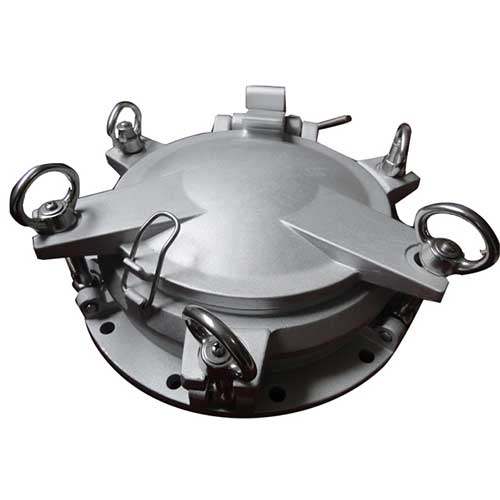
5. Integration with Vessel Architecture
Custom-designed marine windows have to be in harmony with the overall look of the vessel and hull structure, which includes and the interior layouts. This requires tight coordination between naval engineers, architects and window manufacturers to ensure that the windows are placed precisely in the space intended for them without hindering other systems. Considerations like the mounting hardware, weight distribution as well as maintenance accessibility should be taken into consideration when designing the windows.
6. Cost and Lead Time Management
Custom-designed windows for marine applications can be longer and more expensive than the standard alternatives. The complexity of designing materials, processing and certification all contribute to greater costs and extended durations. It is crucial the project manager consider balancing the advantages of custom-designed shapes against budget and time restrictions, and plan in advance to avoid delays and cost overruns.
7. Aesthetic and Functional Balance
Although custom-shape design can increase the aesthetic appeal of vessels however, designers must make sure that aesthetics don’t affect the functionality. The windows should offer adequate light, visibility as well as thermal insulation. Furthermore, additional features such as colored glass, ultraviolet protection or smart glass technologies could be integrated without impacting the aesthetics.
8. Environmental and Regulatory Considerations
Additionally, environmental factors like the climate, UV exposure and salt spray should be taken into consideration when designing and selection of materials. In addition, custom windows should be in compliance with maritime regulations pertaining to environmental protection, safety in addition to energy-efficiency. Staying current with the latest standards will ensure that the windows are in compliance throughout the life of the vessel.
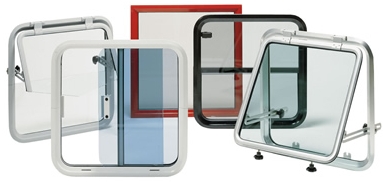
Emerging Trends and Innovations in Custom Shape Design for Marine Windows
As marine vessels continue to advance in complexity and style, so are the demands on the marine windows of the vessels. Custom shape design in windows for marine applications is entering a new phase thanks to technological advances, material advancements and the increasing environmental awareness.
1. Smart Glass Integration for Dynamic Control
The most important developments is the use the technology of intelligent glass. Electrochromic and photochromic glasses permit windows to automatically change tint or at the touch of a button, offering the ability to adjust shading and reduce glare. When combined with custom-designed forms, smart glass permits designers to design specific areas, such as bridge windows or passengers lounges to maximize quality of comfort as well as energy efficient, without the loss of natural light or clarity.
2. Advanced Materials and Hybrid Composites
The emergence of new materials such as laminated acrylic composites, composite glass and hybrids are revolutionizing possibilities for custom marine window designs. These materials are able to combine durability and flexibility with impact resistance, which allows the creation of intricate curves as well as multi-faceted designs that were impossible or difficult to achieve with traditional glass. Their lighter weight aids in improving efficiency of vessels and fuel economy.
3. Precision Digital Design and Manufacturing
Digital tools that are cutting-edge, like 3D CAD modeling as well as CNC Machining, allow for extremely precise production of intricate window shapes. These techniques reduce manufacturing time-to-market and minimize errors, allowing shipbuilders create complex plans with confidence. Additionally, the collaboration via digital technology between manufacturers and designers ensures that windows are seamlessly integrated with the vessel’s structure and specifications.
4. Embedded Technology and Augmented Reality Displays
Windows for custom-made marines are now constructed to include embedded sensors as well as heads-up display (HUDs) and different digital devices. This advancement improves the ability to navigate and improve situational awareness by displaying critical information directly onto the window’s surface, without blocking the view. These technologies are especially beneficial in bridge windows where the ability to maximize information flow will enhance the safety and efficiency.
5. Sustainability and Eco-Friendly Enhancements
Environmental concerns are creating new ideas for window designs for marine windows. The use of special coatings to block ultraviolet rays as well as cut down on solar heat gain aid in reducing the energy usage of vessels. Designers also focus on designing windows that are simpler to clean, maintain or reuse, which contributes to a vessel’s overall environmental appearance.
6. Customization for Aesthetic and Functional Excellence
Beyond technology, the ability to customize shape is still essential to provide both aesthetic appeal and practical advantages. Designers are taking on asymmetrical polygonal and flowing organic shapes to design distinctive designs for boats, while improving the transmission of light and sightlines. This combination of artistic flair and engineering is the hallmark of modern marine window designs.
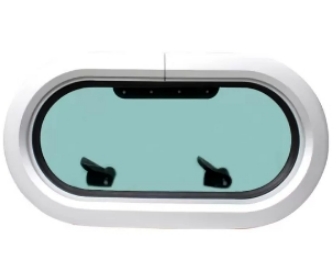
Summary
Custom shape design in marine windows play an increasingly significant function in modern shipbuilding that balances aesthetic appeal, functional needs and structural security. Although it can pose some challenges, such as cost and manufacturing complexity, advancements in material engineering, design software and fabrication techniques continue to broaden the possibilities for creative designs for marine windows. In terms of improving visibility, incorporating unique hull geometry, or making a bold design statement, custom-shaped marine windows are essential to the next generation of maritime vessels.


